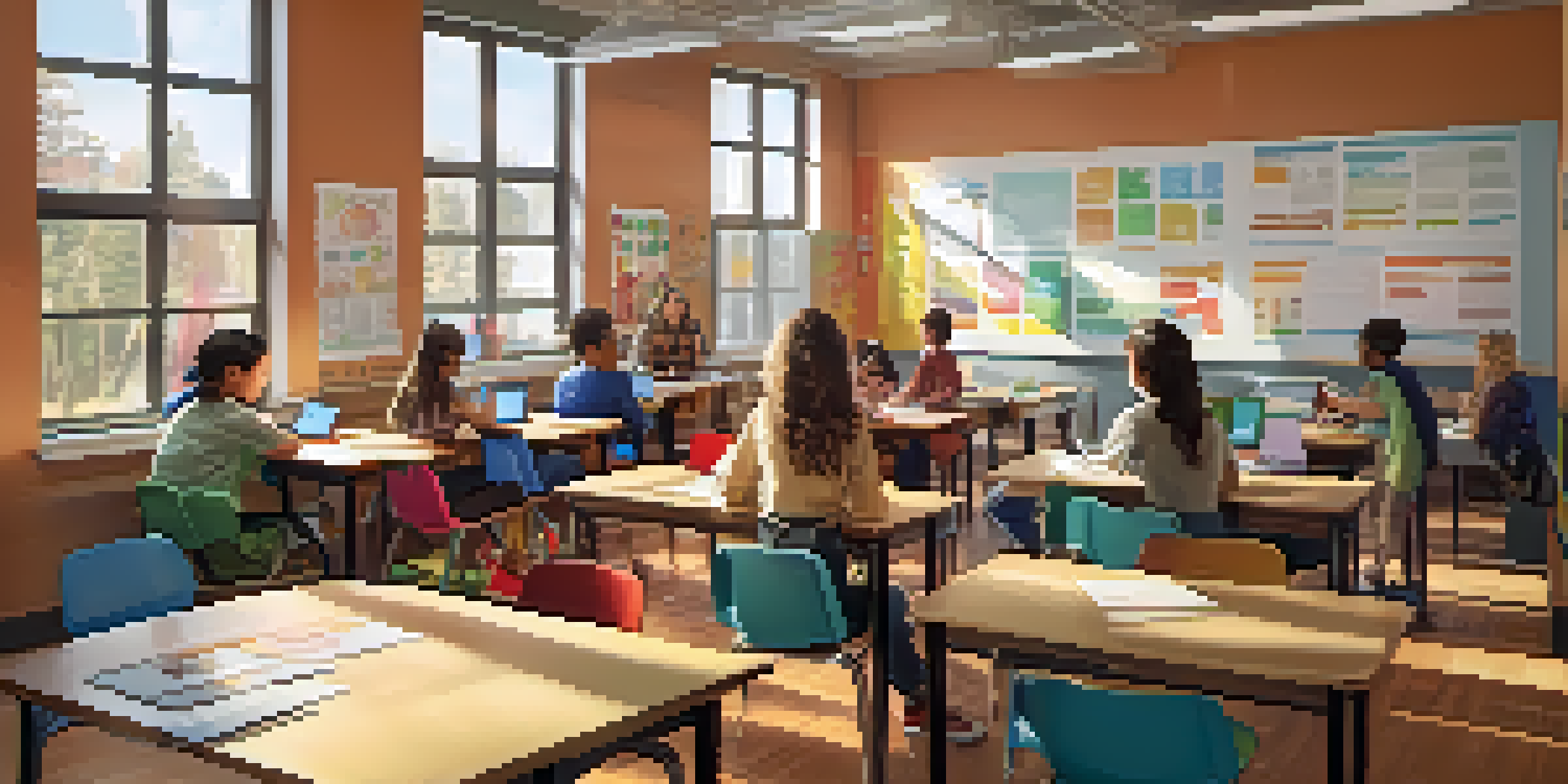Creating Assessment Strategies for Blended Learning Environments

Understanding Blended Learning: A Quick Overview
Blended learning combines traditional face-to-face instruction with online elements, creating a dynamic learning environment. This approach allows educators to leverage technology while providing personal interaction, making lessons more engaging. Understanding this model is crucial, as it sets the stage for developing effective assessment strategies that cater to diverse learning styles.
Identifying Learning Outcomes for Effective Assessment
Before creating assessments, it's essential to clarify what students should learn and achieve. Clearly defined learning outcomes give direction to both teaching and assessment processes. By aligning assessments with these outcomes, educators can ensure that they accurately measure student understanding and skills, fostering a more meaningful learning experience.
Blended Learning Enhances Engagement
Blended learning combines in-person and online methods, creating an engaging environment that caters to diverse learning styles.
Diverse Assessment Methods for Blended Learning
In blended learning, utilizing various assessment methods can cater to different learning preferences. Traditional tests, online quizzes, peer reviews, and project-based assessments can all play a role. This diversity not only keeps students engaged but also provides a more comprehensive view of their progress and understanding.
Formative vs. Summative Assessments: When to Use Each
Formative assessments are ongoing evaluations that help track student progress, while summative assessments evaluate learning at the end of an instructional unit. Both types have their place in a blended learning environment. Using formative assessments regularly can guide instruction and provide feedback, while summative assessments can measure overall achievement.
Diverse Assessments Foster Understanding
Utilizing various assessment methods, such as quizzes and peer reviews, provides a comprehensive view of student progress.
Incorporating Technology in Assessment Strategies
Technology plays a pivotal role in enhancing assessment strategies in blended learning. Tools like online quizzes, discussion forums, and digital portfolios can make assessments more interactive and accessible. By integrating technology, educators can streamline the assessment process and provide instant feedback, which is invaluable for student growth.
Engaging Students Through Self and Peer Assessment
Encouraging students to engage in self and peer assessments fosters a sense of ownership over their learning. This approach not only builds critical thinking skills but also enhances collaboration among peers. When students participate in assessing each other's work, they gain new perspectives and deepen their understanding of the subject matter.
Continuous Feedback Drives Improvement
Establishing a feedback loop enables students to identify strengths and areas for growth, empowering them to take control of their learning.
Creating a Feedback Loop for Continuous Improvement
Feedback is a vital component of the learning process, especially in blended environments. Establishing a continuous feedback loop helps students understand their strengths and areas for improvement. Regular, constructive feedback empowers students to take charge of their learning journey and adjust their study strategies accordingly.
Evaluating and Adjusting Assessment Strategies Over Time
Assessment strategies should evolve based on student performance and feedback. Regularly evaluating and adjusting these strategies ensures they remain effective and relevant. This iterative process allows educators to refine their approaches, leading to better learning outcomes and a more responsive educational experience.